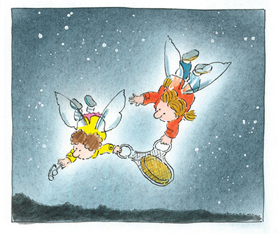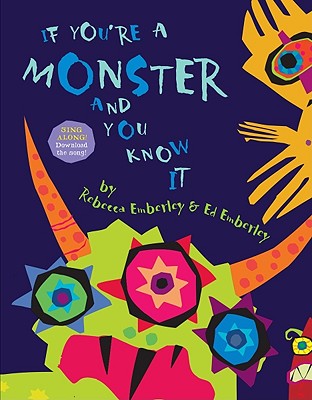Title: The Copycat
Fish
Author:
Gail Donovan
Illustrator:
David Austin Clar Studio
Publishing
Company: Night Sky Books
Copyright:
2001
# of
Pages: 23
Genre/Category:
Fantasy
I chose this book because it is
another story about Rainbow Fish, and I loved Rainbow Fish when I was younger.
In this story, Rainbow Fish goes to school, and a younger fish, Tug, copies
everything he does. Rainbow Fish gets really annoyed at Tug, but the teacher
partners Tug and Rainbow Fish together to plant a garden. The two fish learn to
work together, and they end up liking each other in the end.
 I think the background illustrations
in this book were created with watercolors, but I think the other parts were
created with colored pencils. The illustrator uses jagged lines throughout the
book, and I feel like this helps add to Rainbow Fish’s frustration at being
copied. The fish are all outlined in a shadowy blue or black line. I feel like
it helps give the fish depth. I really like the way the ocean is portrayed. The
illustrator uses blues, greens, and purples all mixed together to give the
reader an underwater experience.
I think the background illustrations
in this book were created with watercolors, but I think the other parts were
created with colored pencils. The illustrator uses jagged lines throughout the
book, and I feel like this helps add to Rainbow Fish’s frustration at being
copied. The fish are all outlined in a shadowy blue or black line. I feel like
it helps give the fish depth. I really like the way the ocean is portrayed. The
illustrator uses blues, greens, and purples all mixed together to give the
reader an underwater experience.
I would recommend this book for
children ages 2-5. The book has beautiful illustrations, simple words, and a
clear moral. Teachers could use this book to teach children about working
together and getting along. The fish in the book had to sort things by size, so
younger children could have to sort things from smallest to largest or largest
to smallest. Since I would recommend this book for younger children, I think
teachers could also use this book when teaching colors. The illustrations are
so colorful, and the students could work with Rainbow Fish’s scales. This book
could also be used as an introduction to teaching children about fish.






